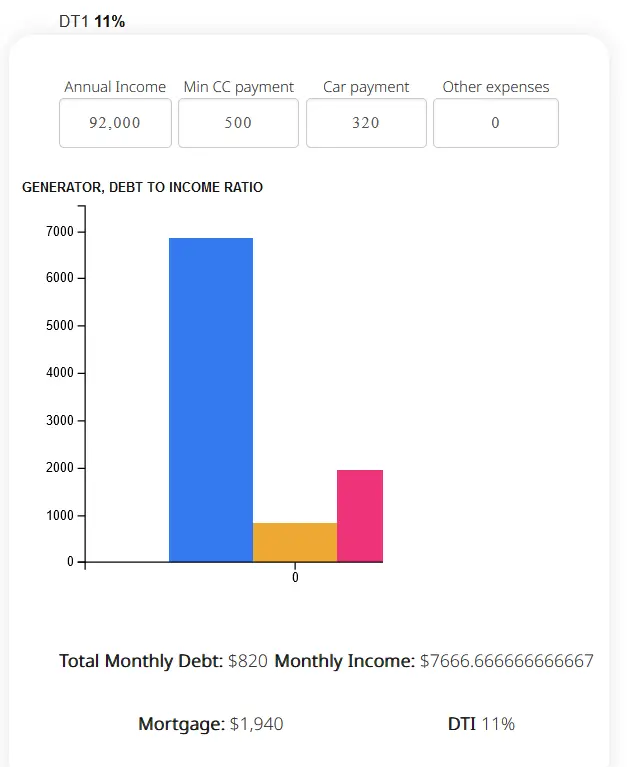
An income calculator is utilized to assess an individual's debt to income ratio, which measures their level of indebtedness in relation to their earnings. This tool computes the percentage of an individual's monthly income that is allocated towards servicing their debts. The debt to income ratio is a crucial financial metric utilized by lenders to evaluate a person's capacity to handle additional debt and make timely payments.
To calculate the debt to income ratio, the calculator requires the person's monthly income and their total monthly debt payments. The ratio is then determined by dividing the total monthly debt payments by the monthly income and multiplying by 100 to get a percentage.
For example, let's say a person has a monthly income of $5,000 and monthly debt payments of $1,500 (including loan repayments, credit card bills, and other debts). The debt to income ratio would be (1,500 / 5,000) x 100 = 30%.
The ideal or best debt-to-income ratio varies depending on the lender and the type of loan being sought. However, a general guideline often used is that a debt-to-income ratio of 43% or lower is considered favorable and indicates that an individual has a manageable level of debt relative to their income.
In real life, the debt to income ratio is commonly used by lenders when considering an individual's application for a loan or credit. A lower debt to income ratio indicates that a person has more disposable income available to meet their loan obligations, making them a lower risk borrower.
For instance, when applying for a mortgage, lenders typically have maximum allowable debt to income ratio limits. If a person's ratio exceeds the limit, they may be deemed as having too much debt relative to their income, and their mortgage application might be denied or require additional measures such as a bigger down payment or a cosigner.
Similarly, when applying for a credit card, lenders may use the debt to income ratio as a factor in determining the person's creditworthiness and the credit limit they can provide. A higher ratio may result in a lower credit limit or higher interest rates.
